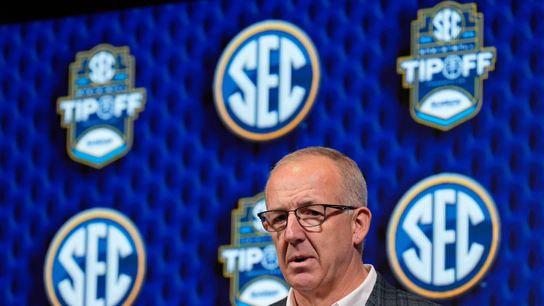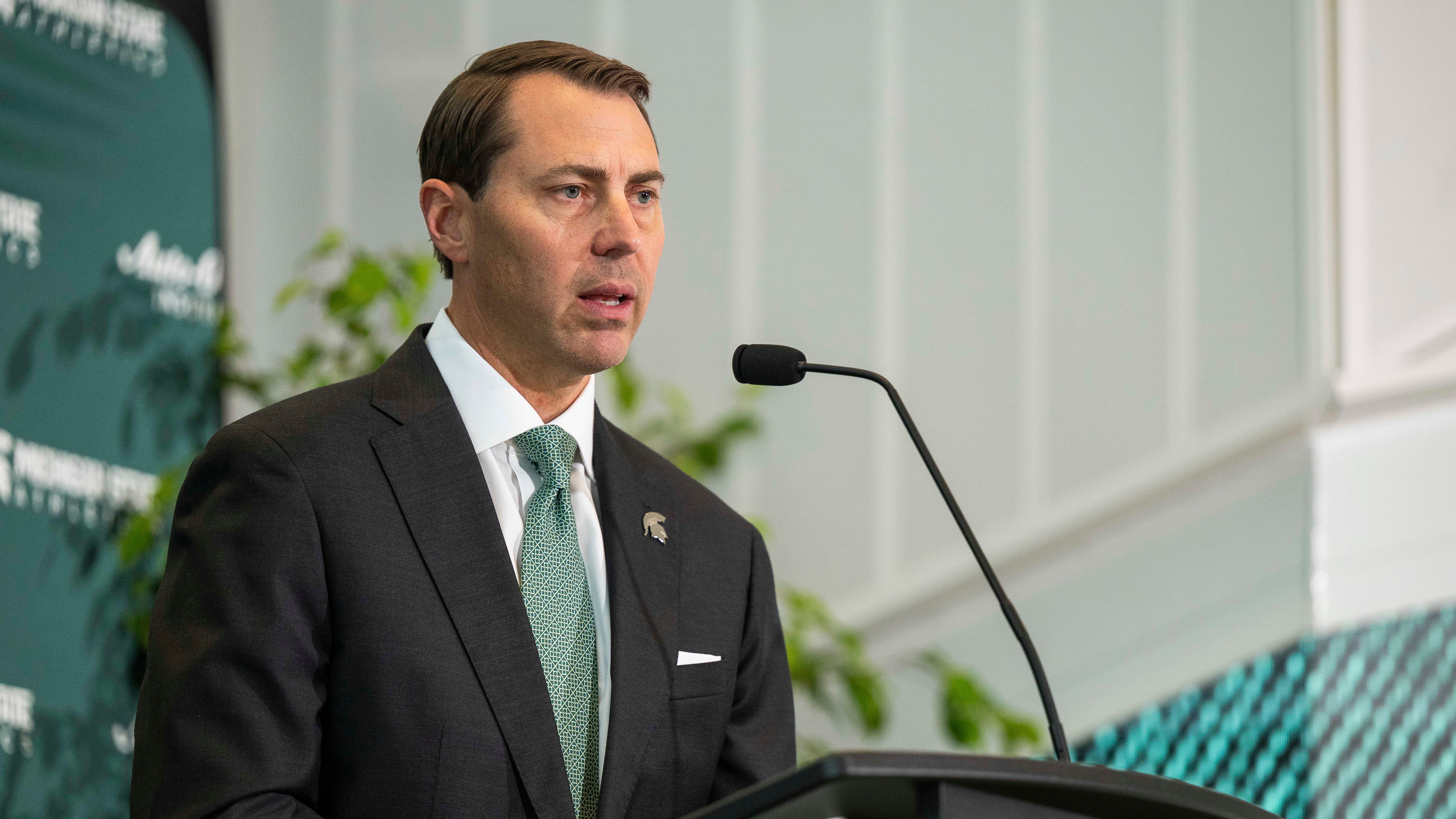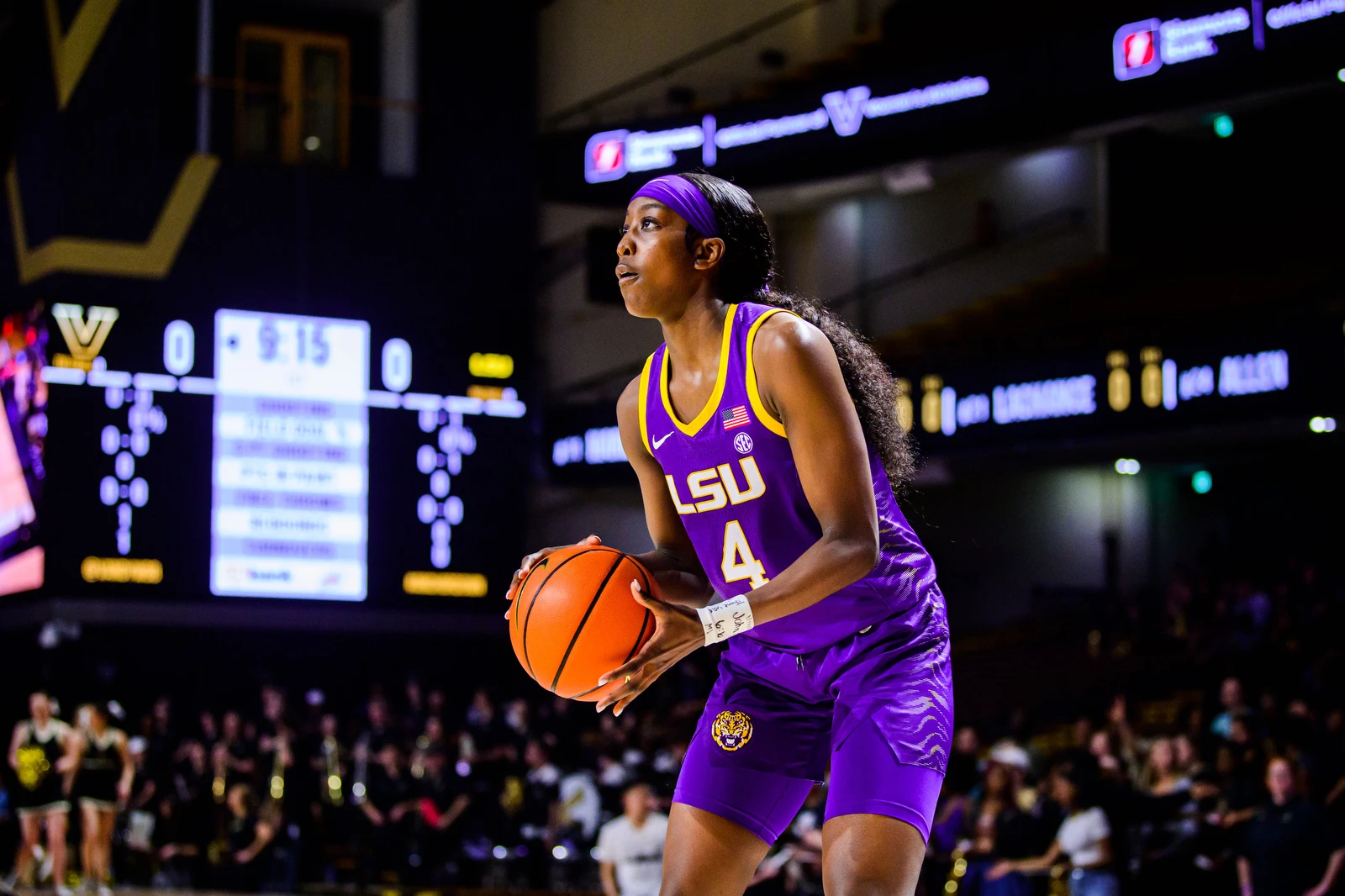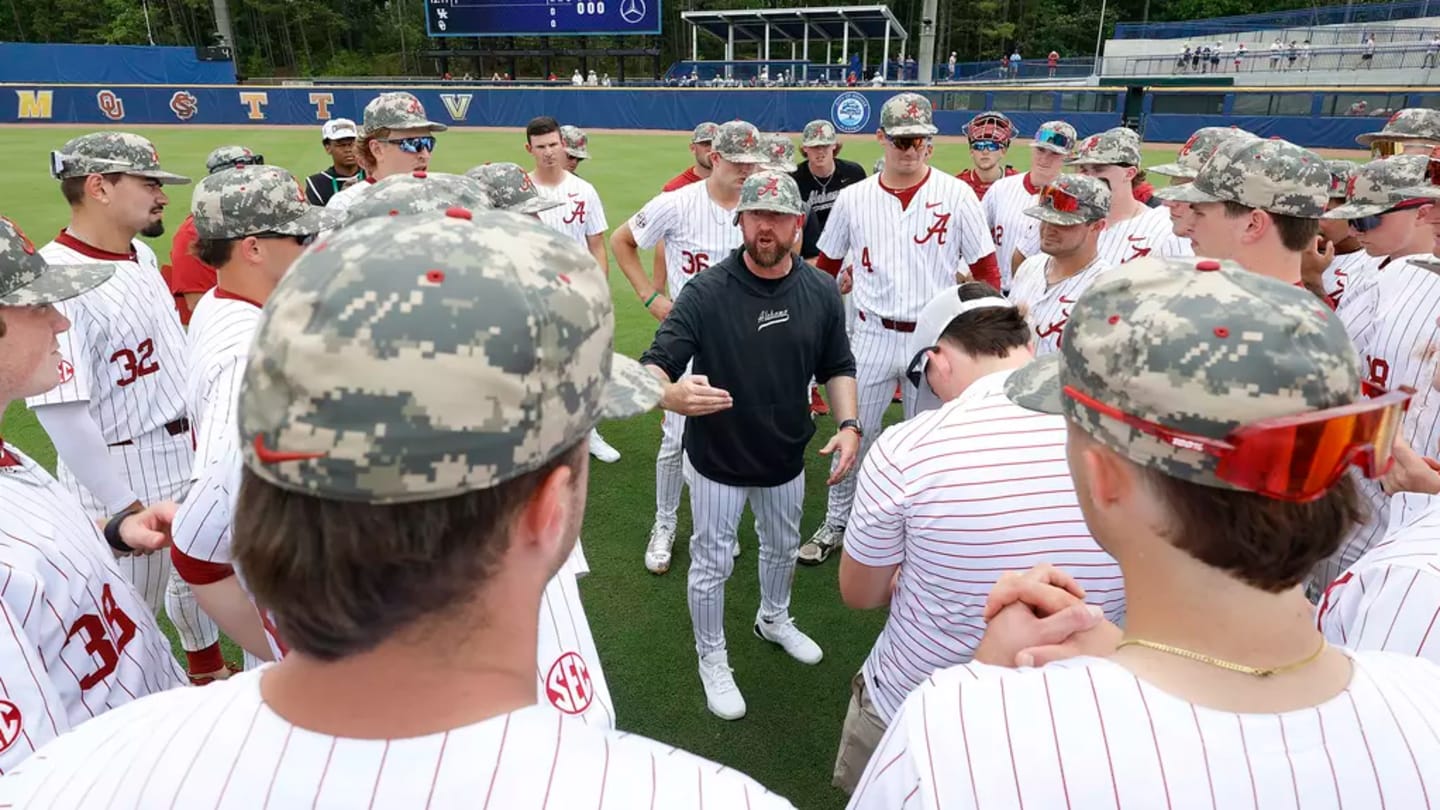NIL
3 bold moves Nick Saban must make if he wants to save college football
Nick Saban may be done coaching, but he’s not done fighting for the future of college football. Fresh off his retirement, the legendary Alabama coach is expected to co-chair a brand-new commission on college sports alongside Texas Tech NIL collective founder Cody Campbell and former President Donald Trump. The group’s purpose? Untangling the mess that […]

Nick Saban may be done coaching, but he’s not done fighting for the future of college football.
Fresh off his retirement, the legendary Alabama coach is expected to co-chair a brand-new commission on college sports alongside Texas Tech NIL collective founder Cody Campbell and former President Donald Trump. The group’s purpose? Untangling the mess that college athletics—especially football—has become in the NIL era.
The commission plans to tackle everything from player movement in the transfer portal to Title IX issues, revenue sharing, and the chaotic state of booster involvement.
Let’s be real: this is finally a decision that is long overdue.
All that being said, ifNick Saban truly wants to cement his legacy by helping fix the sport, here are the three bold moves his commission must make.
1. Tame the NIL & Revenue Sharing Chaos
NIL isn’t the enemy—it’s the way it’s being abused that’s the problem.
Name, Image, and Likeness should absolutely empower student-athletes. They should be able to cash in on their personal brand, make appearances, land endorsement deals, and benefit from their success. But what we have now isn’t that—it’s backdoor bidding wars disguised as NIL. Collectives are offering high schoolers six-figure deals just to commit. That’s not NIL. That’s free agency without rules. They’re also tampering with other team’s players.
The commission needs to push for strong, clear national standards on NIL deals. That includes transparency, oversight, and ideally, a financial cap for revenue sharing — which will be a different thing than NIL. No other sport operates without a salary ceiling. Why should college football? If we’re moving toward a world where revenue sharing is the norm, then the playing field should be somewhat level financially.
Otherwise, only the richest schools—Texas, Texas A&M, Oregon—will consistently dominate the recruiting landscape, not because of culture, coaching, or development, but because they simply outbid everyone else. That’s not what college football is supposed to be.
2. Fix the Transfer Portal and Redefine Eligibility
Right now, the transfer portal is a free-for-all. Players are hopping schools more often than some fans buy jerseys. And while mobility and opportunity are good things in theory, what we’ve got now is instability. Chaos. And it’s hurting both players and programs.
The solution? Streamline the system.
First, narrow it to one transfer window. Coaches and players both need clarity and breathing room. Second, incentivize loyalty. Revenue sharing should be scaled by experience and commitment. Juniors and seniors who stay with their programs should see a bigger piece of the pie—rewarding development and discouraging short-term exits.
Also, we’ve got to end the constant loopholes in eligibility. Right now, players can bounce from school to school with waivers and redshirts and “medical hardships” that make things even harder to track. Just make it simple: five years to play, no redshirts, one free transfer. After that? You lose a year of eligibility if you decide to move again as an undergrad. Am I saying there won’t be exceptions to the rule? Sure, there may be a few, but those will be “exceptions,” not the rule.
It’s not about punishing kids. It’s about setting expectations—and restoring some sense of stability to college football rosters. If every athlete knows they’ve got five years and one free shot at a fresh start, that’s both fair and firm.
And you know who else benefits from this? The fans. You know, the people who are paying and watching the product. You might want to think of them.
3. Regulate the Agent Free-For-All
One of the most overlooked disasters in modern college football is the shady underworld of “agents.”
Right now, anyone can act as a middleman for a college athlete. A family friend, a coach, a cousin, a neighbor who once sold insurance—they’re all suddenly “representing” kids in NIL talks. And the truth is, many of these so-called agents have zero experience, zero certification, and zero concern for the athlete’s long-term future.
The NFL has strict agent rules for a reason. So should college football.
Saban’s commission must push for a national registry of certified agents who are allowed to represent athletes. There need to be standards—background checks, ethics policies, consequences for bad actors. Players deserve guidance, not grifters. And right now, too many are being set up to fail by people who see them as a quick payday.
Let’s be blunt: a 17-year-old shouldn’t be expected to navigate the legal and financial implications of a $500,000 NIL deal without experienced representation. That’s asking for disaster. By stepping in here, the commission can help protect kids from exploitation—and protect the sport from further erosion.
Read More
NIL
Julian Lewis discusses Colorado QB battle, NIL and freshman transition
Julian Lewis has been doing everything the right way since he committed to CU last November. He hasn’t complained about Deion Sanders and the Buffs bringing in veteran quarterback Kaidon Salter from the transfer portal or about practice reps during spring practice. The 18-year-old signal caller has put his head down and gotten to work. […]

Julian Lewis has been doing everything the right way since he committed to CU last November.
He hasn’t complained about Deion Sanders and the Buffs bringing in veteran quarterback Kaidon Salter from the transfer portal or about practice reps during spring practice. The 18-year-old signal caller has put his head down and gotten to work.
Lewis has every chance to be the Buffaloes’ starting quarterback when the season opens on Aug. 29 against Georgia Tech, but until then, he has been in Boulder getting his work in every day.
Recently, the Colorado star freshman conducted an email interview with USA TODAY Sports, discussing his adjustment to living in Boulder and college, while also delving into his NIL endeavors.
Here is everything Julian Lewis said in his latest interview, courtesy of USA TODAY Sports and Brent Schrotenboer, broken down by topic:
On the Colorado quarterback battle
“Coach Prime runs this like an NFL team,” Lewis said. “Plus, every program in college football is always going to try and get better and have depth at every position. You can’t even prepare for the season without enough QBs on the roster.”
“CU is about development and competition,” Lewis said. “The only thing I was looking for as a recruit was to be coached by great coaches and have an opportunity to compete as a freshman. I’ve been competing for QB jobs since I was 7. I joined a team at 10 that already had a QB. I competed every day against the guy who was there, and we ended up winning the Battle Youth National Championship that season, and I threw 70 touchdown passes.”
On a possible quarterback rotation
“Coach Prime and Coach (Pat) Shurmur are going to put me in the best position to develop and our team in the best position to win. I have total faith in that. And I’ve got a lot of work to do in a little bit of time, so I’m ready when my coaches say I’m ready.”
On adjusting to the physicality of college football
“I’ve gained 15lbs since January,” Lewis wrote to USA TODAY Sports. “I’ll probably put on whatever I can add before we get into pads, and that will be what it is for this season.”
On NIL as a high-profile recruit
“I’m blessed to be a part of this era in college and high school sports,” Lewis replied. “There are thousands of great athletes who came before us who didn’t have the opportunities today. NIL has nothing to do with my college career; football and NIL are two very separate things. Football is my priority. I have a responsibility to myself, my teammates, and my university to become the best player that I can be. NIL is going well, I’m thankful for the opportunities that I have. My dad and my team have done a really good job creating opportunities for me.”
On balancing football with NIL
“No it wasn’t,” Lewis said when asked whether NIL was part of his decision to attend Colorado. “It really came down to where I wanted to live and the opportunity to follow Shedeur who everyone knew was leaving for the NFL.”
“That’s [NIL] the last thing I’m worried about,” Lewis said on if money would make a difference if he stayed at Colorado. “I’m a Buff.”
NIL
In the debate for the College Football Playoff’s future, the tail is wagging the dog
We finally got an answer as to how and why the Big Ten came up with its cockamamie “4+4+2+2+1” proposal for the upcoming College Football Playoff format, to begin with the 2026 season. As reported by The Athletic‘s Scott Dochterman, the Big Ten has developed a healthy distrust that the selection committee will properly evaluate […]

We finally got an answer as to how and why the Big Ten came up with its cockamamie “4+4+2+2+1” proposal for the upcoming College Football Playoff format, to begin with the 2026 season. As reported by The Athletic‘s Scott Dochterman, the Big Ten has developed a healthy distrust that the selection committee will properly evaluate strength of schedules and instead get starry-eyed at the prospect of putting as many SEC teams in a 14- or 16-team field as the bracket will hold. This fear is not unfounded.
In 2017, the committee put in an 11-1 Alabama team that didn’t even win the SEC West over an 11-2 Big Ten champion Ohio State with three wins better than Alabama’s best regular-season victory. (One of Ohio State’s losses that season was at home to eventual Big 12 champion Oklahoma, the type of game all involved want to protect.) In 2018, 9-3 LSU and 9-3 Florida were selected for New Year’s Six bowls over 9-3 Penn State, despite Penn State playing tougher non-conference games and owning more defensible losses than the Tigers and Gators. In 2024 and beyond, those aren’t bowl trips up for grabs, they’re playoff bids.
The Big Ten’s data shows it would actually have gotten more teams in over the past four seasons with a 5+11 (auto-bids for only the five highest-ranked conference champions, at-larges for everyone else) model than the 4+ model, and yet that league prefers the objectivity of four guaranteed bids because, in its opinion, the Big Ten does not reap the rewards it should for playing nine conference games to the SEC and ACC’s eight.
And yet, the SEC is making the exact same complaint about the selection committee. The conference closed its annual spring meetings by distributing a PowerPoint deck that argued, in short, its eight games were more difficult than the Big Ten’s nine and it was the SEC who has been victimized by the committee.
The SEC has shared this packet on its football analytics to consider as College Football Playoff format dominates conversations. (Thread below) pic.twitter.com/UBkEjcvyVh
— Brandon Marcello (@bmarcello) May 29, 2025
Greg Sankey has made not-so-veiled threats to burn the entire system down if an 11-1 Indiana gets in over a 9-3 Alabama again. “It’s clear that not losing becomes in many ways more important than beating the University of Georgia, which two of our teams that were left out did,” he said last week. Sankey was also reportedly bothered that Nebraska canceled a planned 2026-27 home-and-home with Tennessee and has encouraged his schools to continue pursuing those sorts of matchups, but that could change if he and the rest of the SEC believe that getting to 11-1 or 10-2 by any means necessary is a pre-requisite for competing for a national championship.
The SEC has not formally endorsed a playoff proposal, but the general feeling from those on the ground in Destin last week was that the SEC entered the week open to the 4+ model, but left it in favor of 5+11. (Lane Kiffin endorsed the 0+16 model, with no automatic bids for anyone.)
Where are the Big 12 and ACC in all this? Sensing the ground shifting beneath his feet, Big 12 commissioner Brett Yormark strongly campaigned for a 5+11 format last week. Yormark did so knowing that arrangement may ultimately cost his conference bids from year to year. “We want to earn it on the field, and that was the direction of the key stakeholder group — the ADs and the coaches — and I feel very comfortable with that. And I feel the same way, and I’ve been very outspoken about it,” he said.
ACC commissioner Jim Phillips declined to endorse a specific model when asked earlier last month.
Why is the Big 12 supporting a format that might cost itself bids in the long run? In short, the 4+ model is un-American. I mean that literally and figuratively. The only comparable model that reserves championship access for a fourth-place team is the Champions League of European soccer. The NFL guarantees bids for its eight division champions, but nothing to a second- or third-place finisher. Similarly, every other NCAA tournament reserves a bid for conference champions only.
“The 5+11 might not be ideal for the conference, but it’s good for college football and it’s what’s fair,” he said.
Is the solution actually staring us in the face here? The Big Ten is campaigning to radically change the CFP format because of a mistrust in the committee’s ability to properly evaluate the rigor of its schedule. The SEC is making not-so-veiled threats to radically change the way it builds its regular season schedule, for the exact same issue. The two superpowers are talking past each other, when the solution is clear:
You don’t need to change the Playoff. You need to change how Playoff teams are evaluated and selected.
It’s long been argued that the Tuesday night ranking shows do more harm than good to the committee’s credibility. (You try explaining your personal Top 25, in a sport with as few data points as college football, in a logically consistent way from week to week and year to year.) The weekly rankings should have been eliminated by a full decade ago. The NCAA basketball committee releases periodic rankings throughout the season, which is a move that could be adopted if necessary. The NCAA also publishes its own metric (NET) by which the selection committee follows. College football leaders would be wise to consider something similar.
Before you come back with a rebuttal, I’m one step ahead of you. We tried that from 1998 to 2013, and people hated that, too.
What if we compiled a diverse set of opinions from around the country and combined them with a set of handpicked computer rankings? People will love it! https://t.co/F0dRIRDhrg
— Zach Barnett (@zach_barnett) May 27, 2025
A rebuttal to my own rebuttal: Frustration with the BCS was largely a square peg/round hole problem. There was simply no possible way to put more three or four deserving teams into a single championship game. The public is more accepting of computerized rankings in 2025 than it was in 1998, and especially so when used to break ties between 10-2 and 9-3 teams than the impossible task of selecting the No. 1 and No. 2-ranked teams in the nation.
Of course, the devil lives fully within the details here. I’m personally skeptical of any arguments, all of which seemingly originate out of SEC country, where “best” seems to be code for “Let’s just let recruiting rankings and hypothetical Vegas lines decide everything.” The portal and NIL have leveled the playing field, evidenced by the Big Ten’s back-to-back national championships and its 5-1 record vs. the SEC in the 2024-25 postseason.
A BCS-like system wouldn’t have to serve as a be-all, end-all, either. No one’s suggesting we turn the keys of a billion-dollar enterprise governing dozens of multi-billion dollar universities over to a souped-up version of Google Sheets without a set of checks and balances. Commissioners should select a set of rankings to serve as a tiebreaker to a more robust set of instructions that is less open to interpretation of the various individuals cycling in and out of the Gaylord Texan boardroom. Give the selection committee a detailed blueprint of how to build the house, and make them stick to it. It’s not perfect, but it’s better than pre-awarding a spot in a championship tournament to your fourth-place team, or shying away from playing marquee games out of a misguided desire to get to 11-1, no matter how.
When the College Football Playoff killed the BCS after the 2013 season, I never imagined arguing for dusting off its zombie-fied corpse a decade later. But, somehow, it seems more sane and less destructive to the fabric of college football than the alternatives.
NIL
A College Sports Dynasty is Officially OVER | Jessica Benson Show
Jess and Roser talk about the Women’s College Softball World Series Semifinals between Texas Tech and Oklahoma. It was one of the best games of the year, and the Oklahoma Sooners softball dynasty is officially OVER.They also talk about the crazy NIL deal NiJaree Canady earned from Texas Tech and how it represents the NIL […]

Jess and Roser talk about the Women’s College Softball World Series Semifinals between Texas Tech and Oklahoma. It was one of the best games of the year, and the Oklahoma Sooners softball dynasty is officially OVER.
They also talk about the crazy NIL deal NiJaree Canady earned from Texas Tech and how it represents the NIL era of college sports.
#jessicabensonshow
#collegesoftball
#softball
#texastech
#oklahomasooners
NIL
New MSU AD J Batt outlines vision for ‘alignment,’ success
MSU’s new athletic director J Batt was introduced at a news conference on Wednesday. MSU’s new athletic director J Batt was introduced at a news conference on Wednesday. East Lansing — Michigan State’s 21st athletic director J Batt was introduced on Monday with some brief remarks and a press conference where he quickly outlined some of […]


MSU’s new athletic director J Batt was introduced at a news conference on Wednesday.
MSU’s new athletic director J Batt was introduced at a news conference on Wednesday.
East Lansing — Michigan State’s 21st athletic director J Batt was introduced on Monday with some brief remarks and a press conference where he quickly outlined some of his vision for Spartan athletics.
While Batt didn’t go into great detail, he spoke of the need for the football program to be well-resourced, the athletic department to be aligned and his excitement to work with the various Michigan State coaches and staff.
He also made one idea clear: He views Michigan State as a top-tier athletic department.
“This is a Top 10 athletic department in the country,” he said.
Batt on cultivating “alignment” in department
In response to the final question, Batt says that alignment from the board, president and himself down to the fans is the biggest thing to help Michigan State navigate change going forward.
And that’s the final question for Batt, as things wrap up in East Lansing.
Batt on building up football program success
Batt was light on details about what can best support Jonathan Smith and Co. for the football program, which he said is paramount to athletic program success, but said he has already spoken to him and the general gist is it just has to be well resourced.
Whether it’s facilities, NIL, staff salary pool, recruiting budget or the like wasn’t laid out, but Batt seems hip to the idea that the Spartans football program will need to be well-resourced to compete in the Big Ten.
“Certainly haven’t dove in to exactly where that’s going to be, but at the end of the day it comes down to resources,” Batt said.
Guskiewicz on when he knew Batt was the choice
The actual deciding factor was really that Batt just ticked a lot of boxes of the leadership profile, and perhaps not one specific moment in the process. Though Guskiewicz did have some good humor about that, though.
“Just the fact that he took my call when I was told he wouldn’t,” Guskiewicz said, to laughter.
Batt on NIL being paramount to leading an athletic department
“We’re going to be extremely successful and competitive in that space,” Batt said, saying the need to get resources for programs is going to be prioritized.
He also adds that the way NIL and paying players will change as revenue sharing comes along and that they’ll need to continue to plan and act accordingly to adjust to new realities of college athletics.
Regardless, Batt is aware that to be competitive in college sports these days, the NIL efforts — and eventually revenue sharing — will need to be prioritized.
In response to a follow up, Guskiewicz points out the importance of Batt’s fundraising ability as part of leading an athletic department.
Batt on Saban, asking him about job at MSU
Batt said he didn’t necessarily speak to Saban during the process, but his previous discussions with Saban about East Lansing and MSU had painted a good picture to prime him to want to take the job.
“We’re in the opportunity business”
Batt is asked about working in an increasingly transactional world of college sports, but holds firm and refers to his original remarks about opportunity and working to make sure that keeps happening.
“We’re in the opportunity business,” Batt said.
He’s asked a follow up about non-revenue sports and their important to keep funded and thriving in a changing world of college sports.
“They’re just as important. Success across the board is the goal,” Batt said.
Batt on privilege of leading MSU into new era, enhancing Spartans standing in Big Ten
“It’s an incredible privilege,” Batt said, to begin his answer. He’s then asked about leading Michigan State to a position of more prominence in the league.
Batt’s answer to that question is generally brief, but he calls for the need to work with Pettiti and others as Michigan State navigates a new, 18-team Big Ten.
Batt begins opening remarks with thanks, importance of football success and that MSU is a “top” athletic department
“This is an incredible moment for me, my family,” Batt said, as he proceeded with the expected thank yous to various administration and staff, with a specific thank you to Izzo.
Batt goes on to discuss how the job is “all-in” and that he’s an “all-in” person, but that isn’t doable with plenty of people supporting him, as he continues to thank his wife and two sons, saying they look good in green.
Batt moves on, discussing his history as a “below average” college soccer player 25 years ago, and how that shaped his views on college athletics, and spurred him to want to work with and help college athletes benefit from opportunity he had, even as college athletics continues to change.
“I learned what it meant to be part of a team, what it meant to win at the highest level, but what it cemented for me is that college athletics is about opportunity,” Batt said.
He also said the he’s met many staff and student athletes, as well as officials with the Big Ten Conference, including commissioner Tony Pettiti. Also says the key to really making strides as a program to be working in “alignment” between administration, athletics staff, boosters and all involved.
He also added that it will require hard work.
Batt is now speaking about the need for supporting all sports, but that football success is critical and they need to provide the resources for Smith and Co. to succeed, while still providing high-level resources to the rest of the sports teams.
And regardless, Batt was adamant about one fact.
“This is a Top 10 athletic department in the country,” he said, repeating it for emphasis.
Guskiewicz officially welcomes Batt, who is now up to speak
Back at the mic, Guskiewicz is highlighting how college athletics are changing, and how Batt can fit that job and how he’s “the best.” Batt will be tasked with leading Michigan State in an era where NIL has become integral to fielding competitive teams, and where revenue sharing and other elements common to professional sports are coming to intercollegiate athletics.
“It’s a reality that things are changing. Athletics across the U.S. are at a pivotal point,” Guskiewicz said.
Guskiewicz also thanks former athletic director Alan Haller for his multiple years of service to Michigan State. And now Guskiewicz is finally welcoming Batt to the mic as the new Michigan State athletic director, the 21st in school history.
Izzo welcomes Batt, dishes briefly on role in search
Izzo comes to the mic and immediately welcomes the Batts to East Lansing, personally before outlining how he went down to visit with Batt as part of the search. He highlighted how the conversation covered NIL efforts, something Izzo isn’t the keenest about, and Izzo complimented how Batt has worked for Nick Saban, among others, in the past.
“If you can work for those two guys, you can work for anybody,” Izzo said.
Izzo lastly said, wrapping up his mostly light-hearted remarks, by saying that the biggest thing that can elevate Michigan State athletics going forward is great teamwork amidst the athletics staff, and that no coach or team can truly succeed without the administration working in tandem.
And in that, Izzo feels confident Batt can answer the bell.
“We all love the place,” Izzo said.
Guskiewicz outlines search leading to Batt hire
In brief remarks that hyped up the achievements of Michigan State athletics, Guskiewicz explained how he sold the Board of Trustees on a vision to get “top-tier” leadership.
“We we’re going to aim big, we were going to aim high,” Guskiewicz said.
He also thanked the board for helping shape the search before finally moving on and handing the microphone to Izzo for further remarks before Batt is up to speak.
Batt comes to podium, plenty of Spartan dignitaries in attendance
The press conference is officially underway to introduce Batt, and the expected collection of names are in attendance: Tom Izzo, Jonathan Smith, Adam Nightingale and the rest of Michigan State’s head coaches and athletic staff.
President Kevin Guskiewicz is up to speak first.
Introduction
East Lansing — Michigan State is introducing a new athletics leader on Wednesday afternoon, as J Batt will speak publicly on Wednesday at a press conference, his first remarks since being announced as the Spartans’ new athletic director earlier in the week.
Batt is scheduled to speak at 3 p.m. on campus and address an array of topics regarding his new job , Michigan State, and its place in a rapidly-changing world of college sports.
Batt comes to East Lansing after a multi-year stretch in the same role at Georgia Tech, where he was athletic director since 2022. Batt’s hire comes after a brief search in the wake of Alan Haller’s firing in May.
Batt will be the third athletic director at Michigan State since Mark Hollis resigned in 2018. Bill Beekman held the job after Hollis, serving a number of years before Haller took over the job in 2021. The MSU Board of Trustees will vote on approving the hire later in June, with Batt slated to officially begin work on June 16.
Follow along here for live updates from Detroit News contributor Andrew Graham.
NIL
WATCH: $1.5M NIL-Valued Flau’jae Johnson’s Viral Throwback Highlights Years of Dedication Behind the Fame
Flau’jae Johnson. A dynamic guard for the LSU Tigers has built a reputation as a relentless competitor with a story rooted in years of hard work. Paired with her $1.5 million Name, Image, and Likeness (NIL) valuation, she stands out as both a star on the court and a powerhouse off it. The Making of a […]

Flau’jae Johnson. A dynamic guard for the LSU Tigers has built a reputation as a relentless competitor with a story rooted in years of hard work. Paired with her $1.5 million Name, Image, and Likeness (NIL) valuation, she stands out as both a star on the court and a powerhouse off it.
The Making of a Star: Flau’jae Johnson’s Early Years
A recently resurfaced throwback video on Instagram, showing Johnson training at just 13 years old, has captured fans’ attention on social media, offering fans a raw look at the dedication that fuels her success.
Johnson was born on November 3, 2003, in Savannah, Georgia, under circumstances that could have derailed most. Her father, Jason Johnson, a rapper known as Camoflauge, was killed before her birth, leaving her mother, Kia Brooks, to raise her alone.
Despite this tragedy, Brooks nurtured Flau’jae’s talents in basketball and music, setting the foundation for an extraordinary career. By elementary school, Johnson was already drawing attention on the court, her quickness and skill hinting at a bright future.
Her high school years at Sprayberry High in Marietta, Georgia, cemented her status as a top-tier talent. Ranked among the nation’s elite recruits. College programs took notice, but Johnson chose LSU, drawn to its winning culture and the chance to shine on a national stage. That decision marked the start of a journey built on sweat, discipline, and a refusal to settle.
At LSU, she wasted no time making an impact. As a freshman in the 2022-2023 season, she played a key role off the bench, helping the Tigers secure their first national championship with averages of 11.0 points and 5.9 rebounds per game.
Her sophomore year showed growth, but her junior season in 2023-2024 was a breakout, with stats climbing to 18.6 points, 5.6 rebounds, and 2.5 assists per game on 46.8% field-goal shooting, according to ESPN.
The Throwback Video: A Viral Sensation Reveals Hard Work
The recent viral moment that reignited interest in her journey came via Instagram, captioned, “Flau’jae at 13 years old so don’t let people fool you with the overnight success #nissancar,” a pointed reminder of the years behind her rise. Johnson reposted it to her story, letting the footage speak for itself.
Fans flooded social media with praise, marveling at the focus and athleticism on display. The clip, which racked up thousands of views in days, shatters any notion of Johnson as an overnight sensation.
Instead, it reveals a kid who treated every practice like a proving ground, laying the groundwork for the polished player dominating college hoops today. That authenticity resonates, making the video a powerful testament to her roots.
With her senior year at LSU looming in 2025, Johnson stands at a crossroads packed with potential. On the hardwood, she’s poised to lead the Tigers toward another title run, her skills sharper than ever.
KEEP READING: Which Power 5 Women’s Basketball Transfers Will Make the Biggest Impact in 2025?
Opting to return rather than enter the 2024 WNBA Draft signals a calculated move: more time to polish her game and boost her earnings. Scouts already project her as a top pick whenever she turns pro, and her versatility and drive make her a can’t-miss prospect.
College Sports Network has you covered with the latest news, analysis, insights, and trending stories in college football, men’s college basketball, women’s college basketball, and college baseball!
NIL
Alabama Baseball Head Coach Rob Vaughn Given Contract Extension
Alabama baseball coach Rob Vaughn, who has now finished two full seasons at the helm of the Crimson Tide program, has received a contract extension. The news was released by Alabama’s NIL collective on Tuesday night. Vaughn was hired away from Maryland in the summer of 2023. At that time, he inked a five-year pact […]

Alabama baseball coach Rob Vaughn, who has now finished two full seasons at the helm of the Crimson Tide program, has received a contract extension. The news was released by Alabama’s NIL collective on Tuesday night.
Vaughn was hired away from Maryland in the summer of 2023. At that time, he inked a five-year pact worth $900,000 annually. This year, Vaughn led Alabama to its first 40-win regular season since the 2002 campaign.
Terms of his new extension were not initially disclosed, but it is highly likely that Tuesday’s agreement will push Vaughn over the $1 million threshold in terms of annual salary.
During his brief tenure, the Crimson Tide has not missed an NCAA Tournament regional, falling just short of hosting one this summer. Alabama is 74-42 overall since he took over, including 16 SEC wins in the 2025 regular season.
Alabama was 41-18 this season, checking in as the No. 2 seed in the Hattiesburg Regional hosted by No. 16 national seed Southern Miss. The Crimson Tide went 0-2 in the NCAA Tournament, bringing an early end to a successful year in which it peaked at No. 8 in the D1Baseball Top 25.
Multiple high-profile jobs came open across college baseball in the short time since Vaughn has been Alabama’s head coach. Among them have been SEC gigs at Texas and Texas A&M. Mississippi State recently filled its opening by bringing on Brian O’Connor from Virginia.
Vaughn, still just 37 years old (he will be 38 on July 7), is a two-time Big Ten Coach of the Year. One of his teams has hosted a regional: 2022 Maryland; he followed that season by leading the Terrapins to the conference regular season and tournament titles in 2023.
This story will be updated.
-

 College Sports2 weeks ago
College Sports2 weeks agoPortal Update – Basketball and Gymnastics Take Hits
-

 College Sports2 weeks ago
College Sports2 weeks agoPortal Update – Basketball and Gymnastics Take Hits
-

 Professional Sports2 weeks ago
Professional Sports2 weeks agoJon Jones answers UFC retirement speculation as fans accuse champion of 'holding the belt …
-

 Health2 weeks ago
Health2 weeks agoBYU women's basketball guard injures ACL twice
-

 NIL1 week ago
NIL1 week ago2025 NCAA Softball Tournament Bracket: Women’s College World Series bracket, schedule set
-

 Youtube2 weeks ago
Youtube2 weeks agoXavier Legette taught Marty Smith his signature celly
-

 Motorsports2 weeks ago
Motorsports2 weeks agoWhy IHOP Rode With Dale Earnhardt Jr. In Amazon NASCAR Debut
-

 College Sports2 weeks ago
College Sports2 weeks agoNCDC Commitment Profiles: Cyclones’ Martins Moving On to Saint Anselm College • USPHL
-

 High School Sports2 weeks ago
High School Sports2 weeks agoToday in the MHSAA
-

 Health3 weeks ago
Health3 weeks agoNew training facility opens in Reading for athletes' mental and physical advancement



































